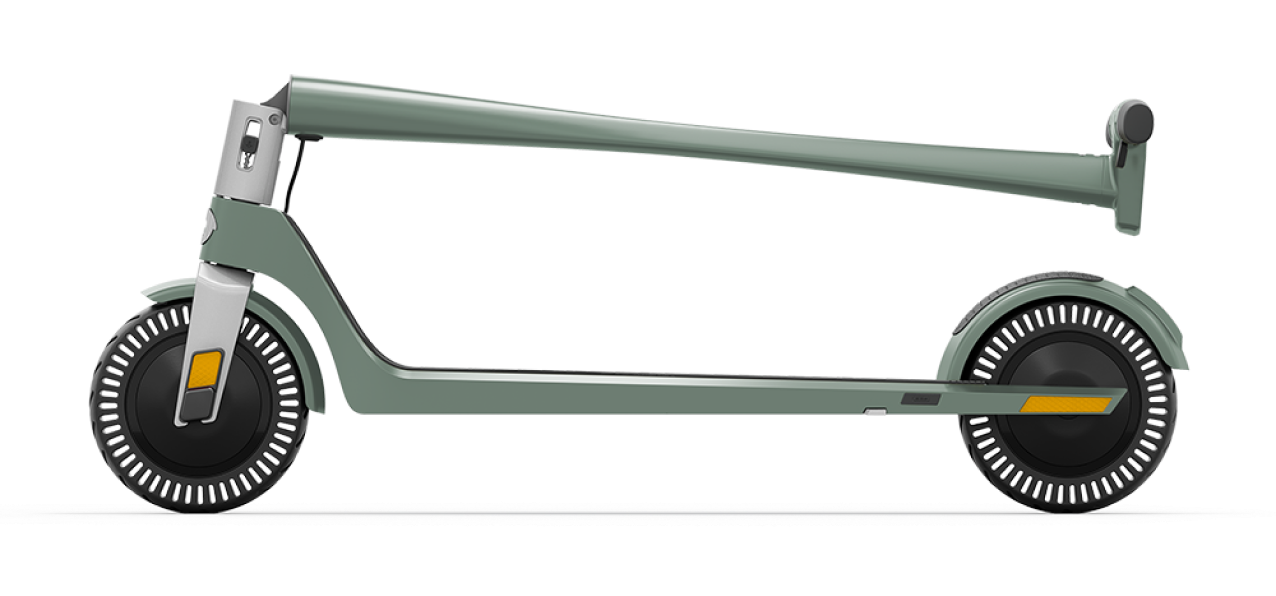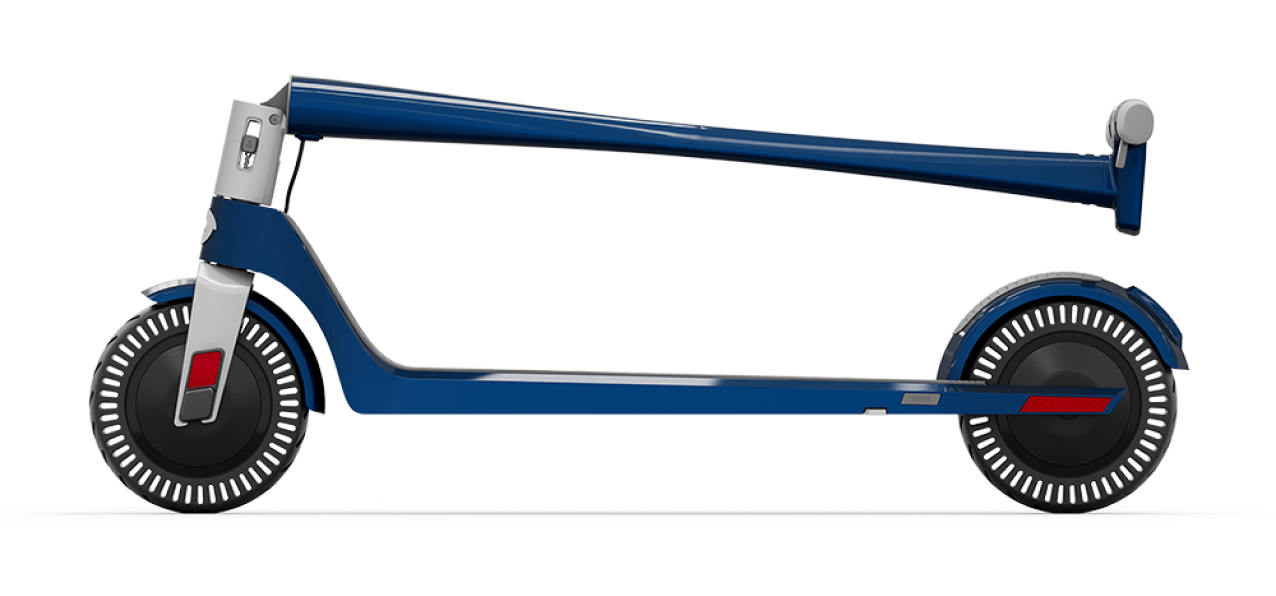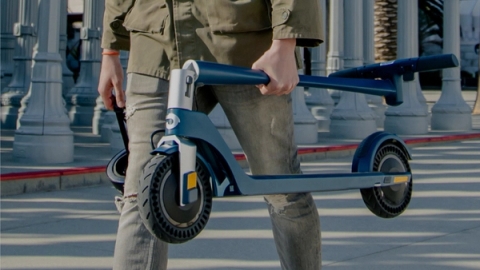In today’s fast-paced world, finding an efficient and cost-effective mode of transportation is crucial. E-scooters offer a convenient and eco-friendly way to navigate urban landscapes. Unagi stands out not only for its superior design and performance but also for its affordability and unmatched rental program.
Electric scooters are nimble, portable, and fit in small spaces. Like bikes, they can achieve relatively high speeds and have stable means of steering and braking.
But where exactly do e-scooters fit in the urban landscape? Should they stick to sidewalks, take their chances on the road, or perhaps confine themselves to bike lanes?
Further complicating the issue are the legal and safety implications -navigating the maze of regulations governing their use, understanding the nuances of insurance requirements, and adhering to safety rules while on the road.
So, where exactly can you ride your electric scooter? Let’s find out.
Can I ride my electric scooter on the road?

In many regions, there's a clear restriction against riding scooters on the road, with the rules steering their use towards designated areas such as bicycle lanes, multi-use paths, and shared street paths.
However, in scenarios where these dedicated paths are not available and sidewalks are a no-go zone for scooters, their use is permitted under specific conditions.
Riders are required to stick to the extreme ends of the road (road shoulder), and must travel in the same direction as the traffic flow. This regulation is put in place to minimize disruptions in vehicle traffic flow, considering that scooters typically move at a slower pace compared to cars and other motor vehicles.
In some areas, electric scooters find themselves in a bit of a regulatory tangle, being lumped together with mopeds and motor-driven cycles, which layers on a hefty set of requirements. For starters, it means your scooter needs to be registered, which might not even be feasible for most models since they lack a Vehicle Identification Number (VIN). Plus, you're expected to hold a valid driver's license, often with a specific endorsement for riding motorcycles or an equivalent. And let's not forget about insurance—yet another hoop to jump through.
Complicating matters further, some regions put a cap on how fast electric scooters can go, typically setting the max somewhere between 15 and 20 mph. However, here's where it gets tricky: some roads enforce a minimum speed limit, usually ranging from 25 to 50 mph, essentially sidelining electric scooters' viability on those stretches.
So, navigating this maze means you'll need to dive into the local laws of where you plan to ride. It's the only way to figure out if your scooter can legally share the road under these conditions, or if the rules make it a no-go from the start.
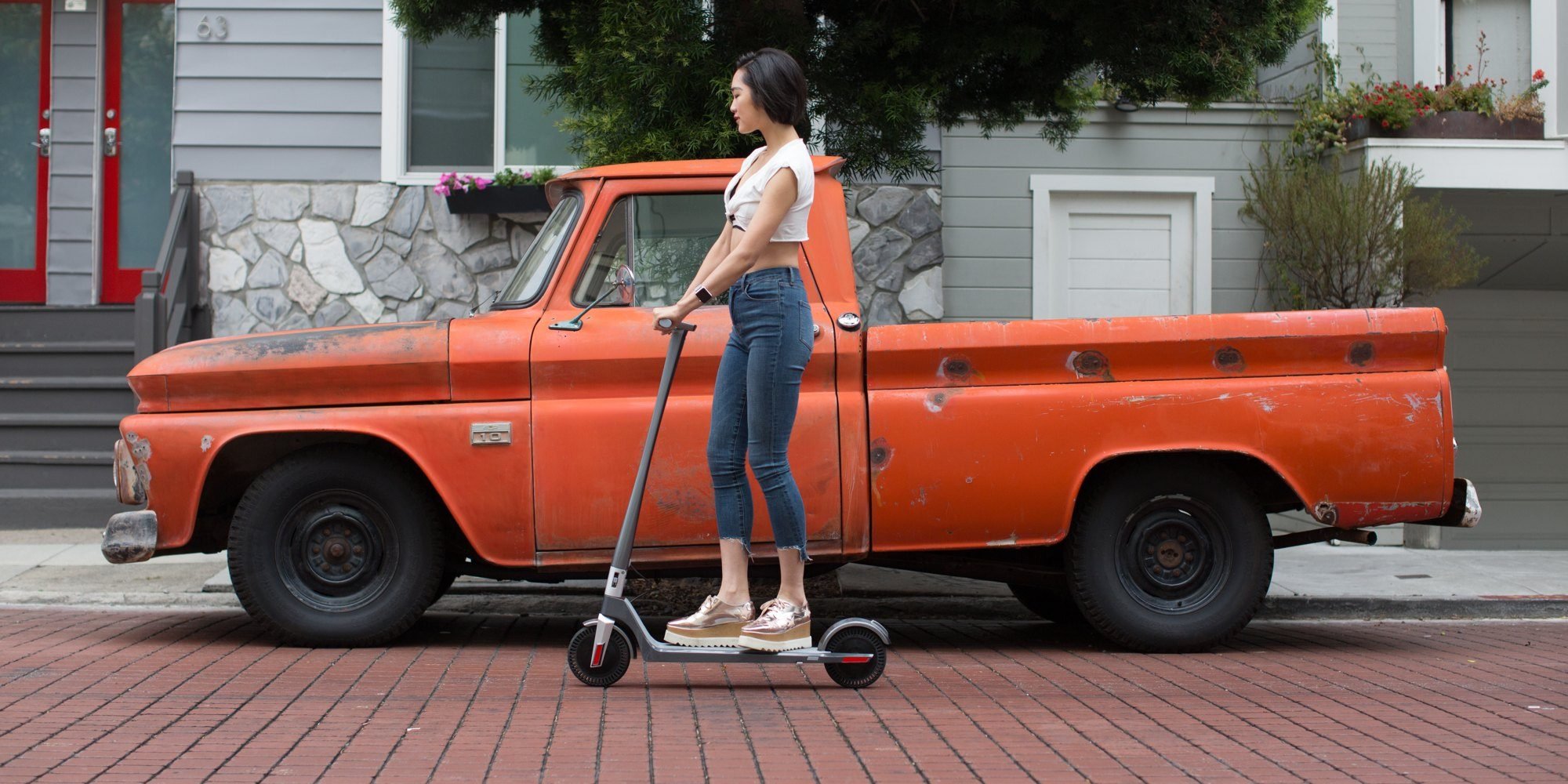
Rules and safety guidelines of the road
These rules offer good guidelines for safely riding an electric scooter on the road, wherever you are:
Helmet and safety gear laws
Wearing a helmet and protective gear while riding your scooter is just common sense, even though some laws do make it a requirement. The road is a shared space filled with all sorts of risks, and sometimes you're not the one causing the trouble. It only takes one unexpected move from someone else on the road to put you in harm's way. So, it makes sense to wear some protection, just in case. This way, you can lessen the impact should something go wrong.
At the very least, you should be wearing a certified helmet (a full-face mountain biking helmet or a sturdy motorcycle helmet works well, especially if you're on a faster scooter), quality gloves for grip and protection, and a high-visibility vest. It's basically the commute equivalent of wearing pants to the office—non-negotiable. From there, consider leveling up with elbow and knee guards for that extra layer of safety.
When it comes to the law, most regulations zero in on helmets, requiring riders to wear one as the absolute minimum. Beyond that, the law might not spell out the need for additional armor, but considering the stakes, why take the chance?
Lane usage
When it's okay to take your ride onto the road, stick to the edge as safely as possible, in the direction of traffic flow. Stay close to the curb, giving yourself a safety buffer of about 3 feet from parked cars or the edge of the road. This means sticking to the right side in countries with right-hand traffic, like the USA, and to the left side in left-hand traffic countries, such as Britain.
You might wonder: Why not take the road less traveled and ride against traffic to see oncoming cars better? It boils down to two big reasons: being seen and the laws of physics. Moving with the flow of traffic makes you more predictable and noticeable to drivers, especially when they're pulling out of driveways or making turns at intersections. In right-hand traffic countries, for instance, drivers turning right are mainly looking for traffic coming from their left. They're not expecting someone to be coming the wrong way (on the right side) in the bike lane.
Then, there's the physics of it all (the difference between a rear-end bump and a head-on collision). If you're scooting along at 10 mph and a car hits you from behind at 35 mph, the impact is less severe because both of you are moving in the same direction. Compare this to a head-on collision at those speeds, where the impact force combines the momentum of both the scooter and the car, significantly increasing the risk of severe injury or worse.
Riding near the middle of the road is a no-go. It not only increases the risk of accidents but can also disrupt traffic flow, potentially leading to road rage, and consequently, higher accident risks.
Even when riding in pairs, don't ride side by side. Stick to a single file to avoid pushing the second rider towards the middle of the road, where the risks just multiply.
Give space, master your brakes
On the road, it’s best to always keep in mind that in any contest between a car and a scooter, the car will always win. That's why it's essential to maintain a good amount of space for both vehicles and pedestrians alike, not just for courtesy but for safety. This extra space is your buffer zone, giving you the precious seconds needed to react if something unexpected pops up, like a car darting out or a pedestrian stepping in front of you.
Equally important is understanding how quickly you can come to a stop, based on your speed and the road conditions. Mastering your scooter's braking system is what stands between a close call and a call for help. It allows you to navigate more confidently and safely, preparing you for those moments when quick thinking and rapid response are critical.
Keep an eye on speed limits
Every road and path you'll encounter has its own set of rules, including speed limits. In bike lanes and shared paths, you might find that the speed limit is lower than what some scooters, like the tech-savvy UNAGI Model Voyager, can achieve. Luckily, models like these usually come equipped with an app that lets you set a speed cap, helping you steer clear of any accidental speed violations.
Highways are a different beast, with speed limits that can be much higher than your scooter's top speed. It’s smarter to steer clear of these fast lanes. Mixing it up with high-speed traffic can increase the risk of accidents and might even attract unwanted attention from the authorities.
In areas where roads are shared, particularly those with pedestrians, it's critical to dial back your speed to the lowest setting. Despite their small size and relatively low power, scooters may pose a danger to others on the road and can injure pedestrians, cyclists, and drivers in accidents they might cause through speeding, carelessness, or inattention.
Scouting the best routes
Making informed choices about where to ride can significantly enhance your experience. Here’s how to ensure a smoother journey:
Opt for designated roads
Even where riding on the road is allowed, you’ll want to use good judgment to keep yourself and those around you safe and stick to designated roadways, e.g., bike lanes, wherever possible. Why take the risk of riding on busy roads or crowded sidewalks when there's a safer path laid out for you?
Claim your lane
When you find yourself on a bicycle lane or any path specifically set aside for riders that runs alongside a vehicle roadway, make it a point to ride confidently in the center of the lane. This positioning is strategic— it increases visibility and discourages drivers from trying to squeeze past you at dangerously close distances, enhancing your safety on the road.
Seek out quieter routes
Aim to ride on less busy streets and residential areas as much as you can. High-traffic zones and roads where vehicles reach highway speeds should be avoided. The faster the surrounding traffic, the higher the risk and potential severity of accidents.
Sidewalk riding as a last resort
In situations where traffic intensity or road speeds leave no other safe alternative, riding on the sidewalk might be necessary (though it’s important to know how to ride on sidewalks respectfully and safely). However, with a bit of planning, you can identify routes that steer clear of these major thoroughfares and busy intersections, offering a more enjoyable ride.
Charting your course: The pre-ride ritual
Before you set off, take a moment to map out your journey. Doing so helps you bypass traffic and congested areas, enabling you to choose the safest, most scooter-friendly route.
This can be accomplished through Google Maps and other mapping apps, which can help pinpoint slow streets and cycling routes, which are typically appropriate for electric scooters as well.
More on How to Show Bike Lanes on Google Maps.
Also, as more people turn to personal electric vehicles (PEVs) and other alternative forms of transportation, cities have responded by creating more slow-speed streets and road infrastructure for pedestrians, pets, cyclists, skateboarders, and electric scooter users. This development means an increase in the number of viable routes for your travels.
Importance of visibility and auditory signals
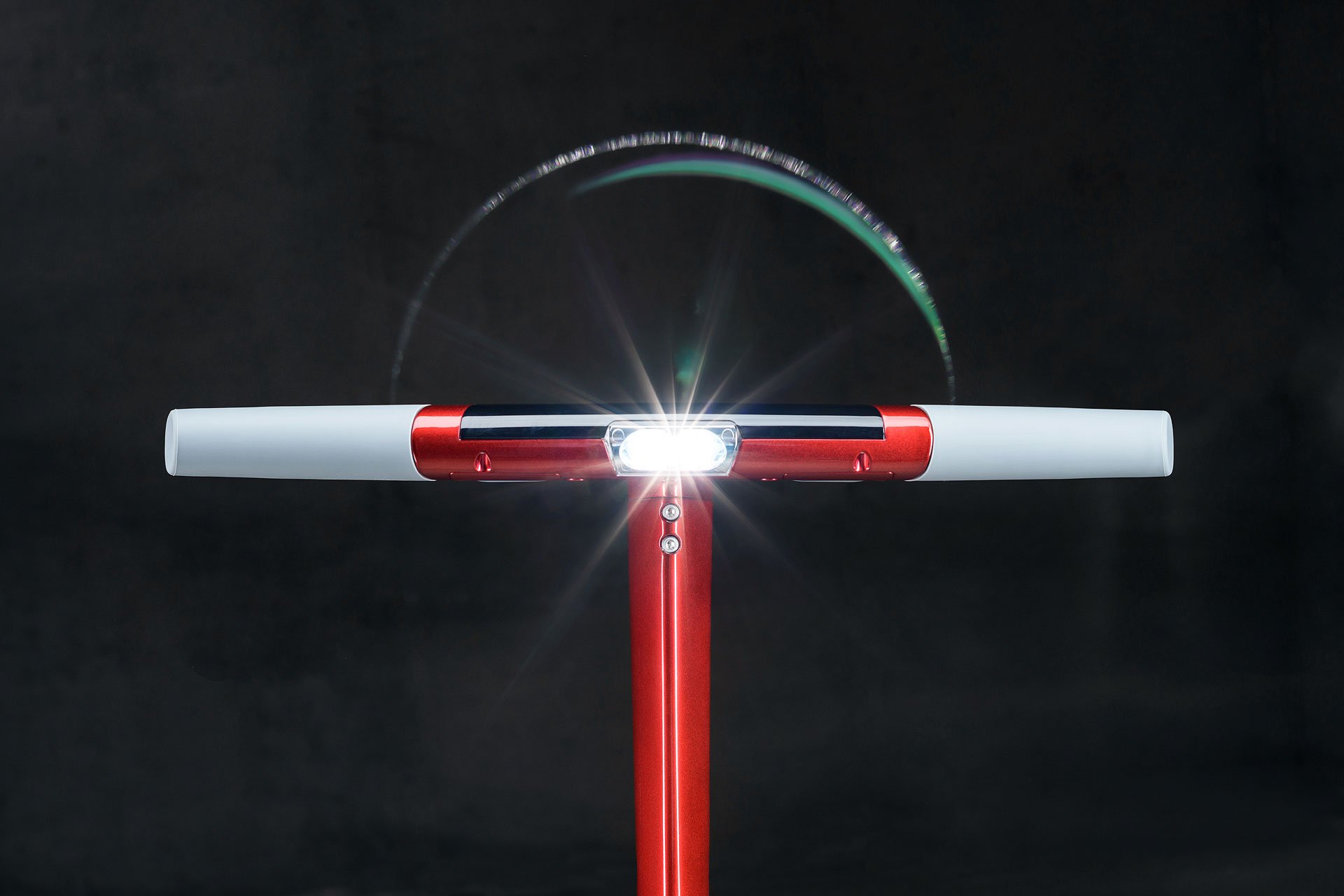
Given its compact size, a scooter can often appear inconspicuous on the road, especially next to larger vehicles, and drivers and other road users can easily miss them, especially in low-light conditions. This makes improving your visibility crucial, which can effectively be achieved through lighting.
Lighting serves a dual purpose: it not only increases your visibility but also communicates your intentions to other road users, like signaling braking or turning.
At a minimum, your scooter should be equipped with a headlight, taillight, and brake light. Modern electric scooters often feature indicators as well, offering an additional way to communicate with fellow road users.

Despite the advancements in scooter lighting, the relatively small design of electric scooters means these lights might not always catch the eye of drivers as easily as you'd hoped. As a result, using hand signals when planning to turn or stop is highly recommended, alongside adopting defensive riding techniques. While hand signals can be more challenging on scooters, opting to slow down significantly or momentarily dismount can make it easier. Also, make sure to look over your shoulder before carrying out any maneuver, as this will help you have a glimpse of the flow of traffic behind you.
Scooters also typically come equipped with horns or bells, which are effective in alerting pedestrians of your approach. However, their sound might not always penetrate the noise of car traffic, meaning scooter riders should not solely rely on them to capture the attention of drivers.
Overview of laws and regulations
Like rules of the road, the requirements for riding an electric scooter can vary from state to state and city to city. In most cases, riders will not need a driver’s license, registration, or insurance to ride a scooter on the road, but as always, you’ll want to check with your local department of motor vehicles to clarify the laws where you are.
Internationally, these requirements will also vary widely and can change from state to state within each country. In the UK, for example, scooters were only recently allowed on public roads in certain cities as part of a pilot program rolled out last summer, and requirements for riding are strict. Other countries, like Japan, require riders to register their vehicles, possess a valid driver’s license, and have insurance.
Where are electric scooters permitted on the road in the US?
This summary is designed to offer a broad overview of whether scooters are permitted on roads in various states/cities. For a more in-depth analysis of scooter laws, we recommend reading our article, 'Understanding Electric Scooter Laws in the USA.' It's also important to note that this information is provided at the state level, and rules can vary significantly from one town, city, or borough to another, so it's crucial to verify the specifics locally.
Alabama (Montgomery County)
Electric scooters (e-scooters) are legally permitted to operate on public streets, right-of-ways, and bicycle paths. They are prohibited from all sidewalks and on streets where the speed limit is 50 mph or higher.
Arizona
Electric scooters are permitted on roads, bicycle paths, and multi-use paths. However, riders must stay close to the right-hand edge of the road when moving slower than traffic, except when overtaking, turning left (at an intersection or into a private road or driveway), or avoiding hazards.
Arkansas
Cities or towns are left to establish rules for the safe operation of electric motorized scooters and their presence on public property. However at the state level electric motorized scooters cannot be operated by persons under 16 years of age or at speeds greater than 15 mph.
California
Electric scooters are permitted on roads with speed limits up to 25 mph, including designated bike lanes, with allowances for up to 35 mph by local authority discretion. Operators must adhere to riding close to the right-hand curb when traveling below normal traffic speed, except when overtaking, making left turns, or avoiding hazards.
Colorado
Electric scooters are recognized under the law and can be operated on roadways. Riders are expected to use the right-hand lane when traveling at speeds less than the normal flow of traffic.
Connecticut
Electric scooters are allowed on roads, in bike lanes, and on bike paths, sharing space with motor vehicles and bicycles. Riders must stay as close to the right side of the roadway as safely possible when moving slower than traffic, except in specific situations such as overtaking, preparing for left turns, avoiding hazards, or when the lane is too narrow for side-by-side travel.
Delaware
In Delaware, the use of electric scooters on public roads, highways, streets, sidewalks, or rights-of-way is generally prohibited, with a few exceptions. Electric scooters are allowed under the following conditions:
- They may be pushed across or along public ways in neutral or with the powertrain disengaged.
- They can be used on streets or highways during special events under a permit from the local government.
Florida
Operators of motorized scooters and micromobility devices are granted the same rights and duties as bicycle riders, with certain exceptions that naturally do not apply to scooters. They are required to use bicycle lanes where available. In the absence of bike lanes, they should ride close to the right side of the roadway when traveling below the normal speed of traffic, with exceptions for overtaking, making left turns, or avoiding road hazards.
Georgia (Atlanta)
Electric scooters are allowed on:
- Streets: Scooters can be ridden on streets, specifically in the rightmost lane.
- Bike lanes, including designated LIT lanes.
- Shared use paths: This includes popular routes such as the BeltLine and paths within city parks.
Riding electric scooters on sidewalks is strictly forbidden and riders must follow all applicable traffic laws, similar to other vehicles.
Hawaii
Electric foot scooters are allowed on highways, roadways, and other public areas designated for vehicle use. They must be operated in single file when on the roadway and are prohibited from sidewalks and pedestrian paths. Operators are required to stay as close to the right side of the roadway as possible, a rule that also applies to one-way streets.
Idaho
E-bikes and E-scooters are allowed on roadways, provided they follow the flow of traffic and do not ride against it, except where indicated by official signs or markings. Operators are required to position themselves as far to the right of the traveled roadway as possible, or to the left in cases where the E-bike or E-scooter is traveling in the left lane of a one-way roadway. In some areas, E-scooters can be used on sidewalks and within crosswalks, provided they do not create a nuisance. Operators must yield to pedestrians and provide an audible warning when overtaking.
Illinois
Allows the operation of low-speed electric scooters on roads where bicycles are permitted, subject to local government authorization and regulation. Key statewide rules include:
- Scooters can ride on any or all highways under local jurisdiction, sidewalks, trails, or other public rights of way where bicycle operation is permitted if authorized by the local authority.
- Speed Limits: Scooters cannot be operated on highways with a posted speed limit exceeding 35 mph.
- Scooter use on State highways is prohibited.
Indiana
Electric foot scooters are allowed on the road and have similar rights and duties as bicycle riders, with specific exceptions not applicable to scooters. Here are the key points on their operation:
- Scooters can be operated on city streets, bike lanes, bikeways, shared roadways, signed shared roadways, trails or greenways, shared-use paths, or paths designated for other uses. Operation on sidewalks is generally prohibited, except when entering or exiting a parked position in the public right-of-way.
- Scooters may not be operated on highways with a posted speed limit over 35 mph.
- Scooters are not allowed on interstate highways. Local authorities or the Indiana Department of Transportation may restrict scooter use on certain roads, including freeways, under their jurisdiction.
Iowa
Electric stand-up scooters can be operated on highways, bikeways, and sidewalks following the laws applicable to bicycles, except where specific provisions cannot be applied to scooters or as otherwise provided.
Kansas
Electric-assisted scooters can be ridden on roadways, bicycle lanes, multi-use paths, and trails or trail networks. However, it is unlawful to operate them on interstate highways, federal highways, state highways, or any public highway or street within the corporate limits of a city unless authorized by the city. Electric-assisted scooters are however allowed to cross federal or state highways.
Where a usable path for bicycles is provided adjacent to a roadway, riders must use the path and not the roadway.
Kentucky
Kentucky permits individuals who are sixteen (16) years of age or older to operate electric low-speed scooters on highways, bicycle lanes and paths, shared streets, and shared-use paths. Riding on sidewalks is generally not permitted, except potentially for children or under local exceptions.
Louisiana
Louisiana permits electric low-speed scooters to operate on sidewalks, bicycle paths, and highways (excluding any limitations or prohibitions for safety imposed by local authorities).
Municipal governing authority may also authorize the operation of motor scooters on sidewalks at speeds not to exceed 20 mph.
Maine
Riders can operate electric scooters on roadways (general rule to ride to the right), paved shoulders, and specifically designated bicycle or multi-use paths. Municipalities have the authority to make ordinances regarding the operation locations on roadways.
Maryland
Maryland permits bicycles and motor scooters, which include electric scooters, to be operated on roadways, bike lanes, or shoulders, except on roadways with speed limits over 50 mph and expressways, unless there's an adjacent approved path. Operators must use bike lanes or shoulders where available.
Massachusetts
In Massachusetts, motorized scooters are allowed on public ways, except in areas where signage indicates they are prohibited or on limited access or express state highways. Riders must always stay on the right side of the road, even when overtaking. Scooters must also have working stop and turn signals to allow operators to keep both hands on the handlebars.
Michigan (Lansing)
Electric scooters are allowed on city streets, bike lanes, and sidewalks outside the downtown area. Riding on sidewalks within the downtown area is prohibited.
Minnesota
Minnesota grants motorized foot scooters the same rights and duties as bicycles, allowing them access to roadways (where they should ride as close as possible to the right-hand curb) and bicycle paths. However, they are not permitted on sidewalks except when accessing adjacent properties.
Mississippi
Electric scooters can operate on marked bicycle paths or lanes, streets or roads where bicycles are permitted, and on sidewalks if they yield to pedestrians and give an audible signal before overtaking. They are generally required to ride as far right on the roadway as practicable, except when passing, turning, avoiding hazards, traveling at the normal speed of traffic, or when the lane is too narrow to share.
They are, however, not allowed on any interstate highway or controlled access facility.
Missouri
They are permitted to be operated on public streets and highways, provided the operator has a valid driver's license. They are subject to the same traffic laws as motor vehicles, including obeying stop signs, driving on the right side of the road, yielding when turning left, and adhering to posted speed limits. They are however prohibited from interstate highways and public thoroughfares that are part of the federal interstate highway system.
Nebraska (Lincoln)
Riders are permitted to use electric scooters on streets and in designated bike lanes downtown (always with the flow of traffic). They are not allowed on streets with speed limits exceeding 35 mph, nor are they permitted on multi-use paths, such as city trails.
Nevada
Electric scooters may operate on roadways, bike lanes, paths, routes at speeds not exceeding 15 mph, and sidewalks if local ordinances permit. Operators are required to ride as close to the right side of the roadway as practical, with exceptions for when traveling at the speed of traffic, preparing for left turns, or when conditions make it unsafe to ride on the right.
New Hampshire (Manchester)
Electric scooters can be operated on any public highway or path within the city that adheres to the traffic ordinances and the provisions (R.S.A. 265:143 -265:153). However, riding an electric scooter on these public highways or bicycle-exclusive paths requires a license issued by the city.
Scooters should not be operated at a speed greater than is reasonable and prudent under the existing conditions. They must be ridden as near to the right-hand side of the highway as practicable.
New Jersey
Low-speed electric scooters (<19 mph), along with low-speed electric bicycles, may be operated on the streets, highways, roadways, and bicycle paths throughout the state, with certain exceptions. They are not permitted on trails designated for non-motorized traffic that have a natural surface tread unless specifically allowed by a local government entity or state agency.
New Mexico
In New Mexico, electric foot scooters are permitted to be ridden on highways, bicycle lanes, or bicycle paths.
New York
Electric scooters are allowed on streets and highways with a posted speed limit of 30 mph or less. Municipalities can regulate the time, place, and manner of their operation. Riding electric scooters on sidewalks is prohibited unless authorized by local law or ordinance.
Ohio
Electric scooters are generally permitted on public roads and in bike lanes. Sidewalks and streets where the speed limit exceeds 35 mph are off-limits.
Oklahoma
In Oklahoma, motorized scooters are allowed on public roads, streets, alleys, bridges, sidewalks, or other public places within the jurisdiction of local governments. Operators must not exceed the legally posted speed limit, and in no event should they drive a motorized scooter at a speed greater than 25 mph or on any roadway with a posted speed limit greater than 25 mph.
Oregon
Electric scooters are permitted to be ridden on highways with a speed limit of no greater than 25 mph, and they may use available bike lanes or cross when necessary without restrictions. Operators must ride as close as practicable to the right curb or edge of the roadway unless:
- They are traveling at the normal speed of traffic.
- Preparing for a left turn.
- Navigating around hazardous conditions.
E-scooters cannot exceed speeds of 24 mph by definition, and their operation is generally limited to 15 mph, making it rare for them to legally "take the lane" except in low-traffic conditions or where traffic is moving at or below 15 mph. Additionally, Oregon's mandatory sidepath law requires electric scooter riders to use an adjacent or nearby bike lane or path when available, without exceptions granted to bicycles and e-bikes.
E-scooters are prohibited on sidewalks except for entering or exiting adjacent properties. Riders must yield to pedestrians and provide an audible signal before overtaking and passing.
Pennsylvania
Electric scooters are restricted to private property only and cannot be legally operated on public roadways. This is due to the specific requirements for vehicles to be legally used on roads. For a scooter (defined as a motor-driven cycle by the Pennsylvania Vehicle Code) to be legally used on roadways, it must be titled, registered, and have insurance.
The scooter must also meet Pennsylvania's equipment and inspection requirements for motor-driven cycles. Many electric scooters lack essential equipment such as fenders, turn signals, and lights necessary to pass inspection. Even with the proper equipment and inspection certification, motor scooters might not be suitable for all roadways, especially if they cannot maintain a speed that keeps up with other traffic. Pennsylvania Vehicle Code stipulates that driving at a slow speed that impedes the normal flow of traffic is not permitted.
South Carolina (Columbia City)
Motor scooters can be operated on public streets; however, they are prohibited from operating on sidewalks and any public street where the speed limit is 25 mph or greater.
South Dakota
Municipalities in South Dakota are empowered to adopt their own traffic regulations and have the authority to restrict the operation of motorized foot scooters on streets, bike paths, or multi-use paths within their jurisdiction. At the state level, the general guideline prohibits these scooters from being used on sidewalks and bars their operation on any highway where the speed limit surpasses 35 mph.
Tennessee
Electric foot scooters ( those that don’t exceed speeds of 15 mph) are allowed to be operated on any part of a street or highway where bicycles are authorized, including bicycle lanes, the shoulder or berm, and paths or trails intended for bicyclists. They cannot be operated on sidewalks unless specifically authorized, and their electric motors must be disabled in such areas.
Texas
Motor-assisted scooters may be operated on streets and highways with posted speed limits of 35 mph or less. Operators should ride as close to the right-hand curb or edge of the roadway as possible when moving slower than other traffic. Additionally, these scooters may cross roads or streets at intersections where the posted speed limit is above 35 mph. They are also allowed on bicycle-exclusive paths and on sidewalks, unless local regulations for safety reasons prohibit such use by county or municipal authorities.
Utah
Motor-assisted scooters are permitted on roads and paths where bicycles are allowed, with the operator expected to follow similar rules as those for bicycle riders. This includes riding near the right-hand edge of the roadway unless overtaking another vehicle, preparing for a left turn, avoiding unsafe conditions, or when in a right-turn only lane while intending to go straight.
Their operation is prohibited in public parking structures, on public property where skateboards are banned, on highways with four or more lanes designated for vehicular traffic, and on roadways with speed limits over 25 mph.
Virginia
Electric scooters are permitted to operate on highways unless prohibited by local ordinance. Riders must operate as close as safely practicable to the right curb or edge of the roadway, except in specific situations such as overtaking another vehicle, preparing for a left turn, or avoiding hazards.
Electric scooters may also be operated on sidewalks and shared-use paths, provided they yield the right-of-way to pedestrians and do not impede pedestrian traffic. They can also use crosswalks where pedestrian, bicycle, or electric power-assisted bicycle use is authorized.
However, electric scooters cannot be operated on any component of the Interstate Highway System, except bicycle or pedestrian facilities that are barrier-separated from the roadway and automobile traffic.
Washington
Motorized foot scooters are permitted on roads, multipurpose trails, and bicycle lanes where bicycles are allowed, as long as there is no prohibition on "motorized vehicles." However, they are not allowed on sidewalks or fully controlled limited access highways.
West Virginia (Charleston)
Electric scooters are allowed to be operated on streets or alleys in Charleston, except where prohibited, and must comply with all traffic laws of both the city and the state. They are, however, not allowed on roadways where the speed limit exceeds 30 mph; sidewalks or surfaces closed to bicycle traffic are also not allowed.
Wisconsin
Electric scooters can be operated on roadways, but operators must ride as close as practicable to the right-hand edge or curb of the roadway to allow for the normal flow of traffic. Additionally, the statutes specify that on bicycle paths, electric scooters should not exceed a speed of 15 mph. Electric scooters may be operated on sidewalks unless prohibited by local regulations. Operators must yield the right-of-way to pedestrians and bicyclists and should signal audibly when overtaking another sidewalk user.
Wyoming (Cheyenne)
Electric scooters are allowed to travel on streets and sidewalks outside the Central Business District, as well as on bikeways and the Greenway system, with a speed limit capped at 15 mph.
Conclusion: Are electric scooters permitted on the road?
In essence, road legality for electric scooters is a "yes, but..." scenario. Yes, they can hit the road where laws are scooter-friendly, but it comes with the big but of shouldering the responsibility for safe, alert riding.
Generally speaking, in areas where electric scooters are recognized and allowed to be used, you'll often find that they're also permitted on the road (on the sidelines though), especially where there aren't any specific paths designated for them, and sidewalk riding is off-limits. It's also common to see the rules for bicycles and electric scooters intertwined, meaning if bikes are allowed on the road, electric scooters likely are too.
Nonetheless, it's crucial to remember that riding an electric scooter on the road comes with inherent risks, especially in areas with high-speed traffic, dense congestion, and poor visibility. It falls on each rider to remain vigilant, equip themselves with the necessary safety gear, and ensure they're sharing the road responsibly with cars, bicycles, and pedestrians alike.
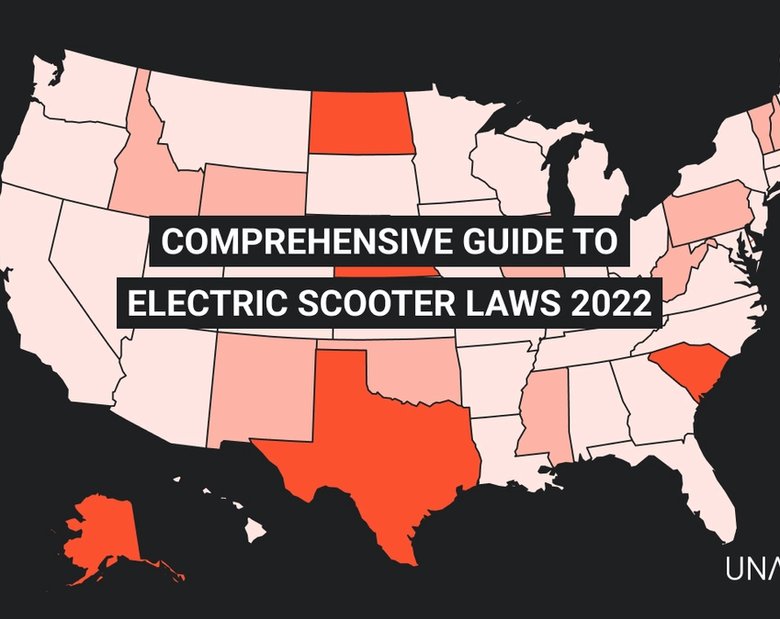
“Is my scooter legal?” is a question many are increasingly asking. The micromobility industry is one of the fastest-growing and most exciting in the world—with promises for...in addition to abundances of the basics of time and money savings. And with this pace of innovation comes a struggle for regulation to keep up.
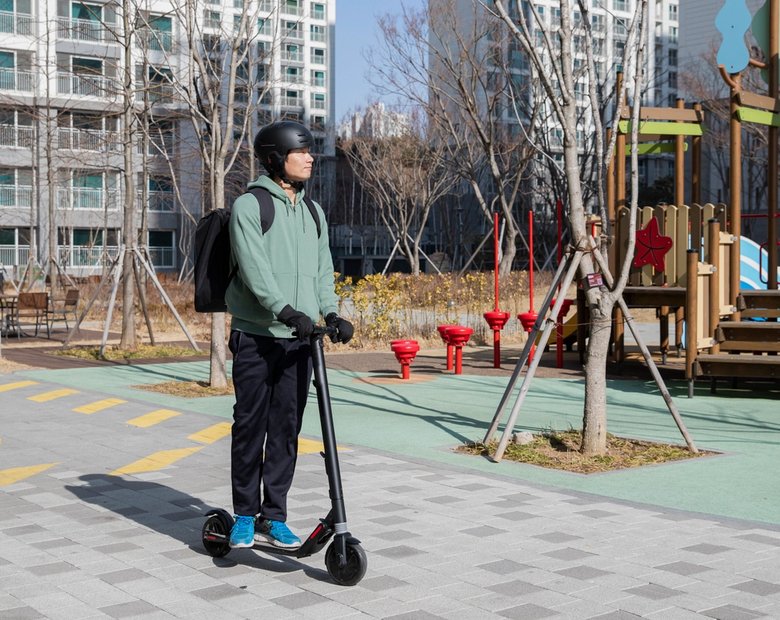
So, you're thinking about joining the electric scooter revolution, huh? You've seen those sleek and stylish scooters zipping around town, effortlessly gliding through traffic, and you can't help but wonder: Are electric scooters easy to ride?

In this guide, we'll break down what defines a lightweight electric scooter, why you should choose one, and the top features you should look for.
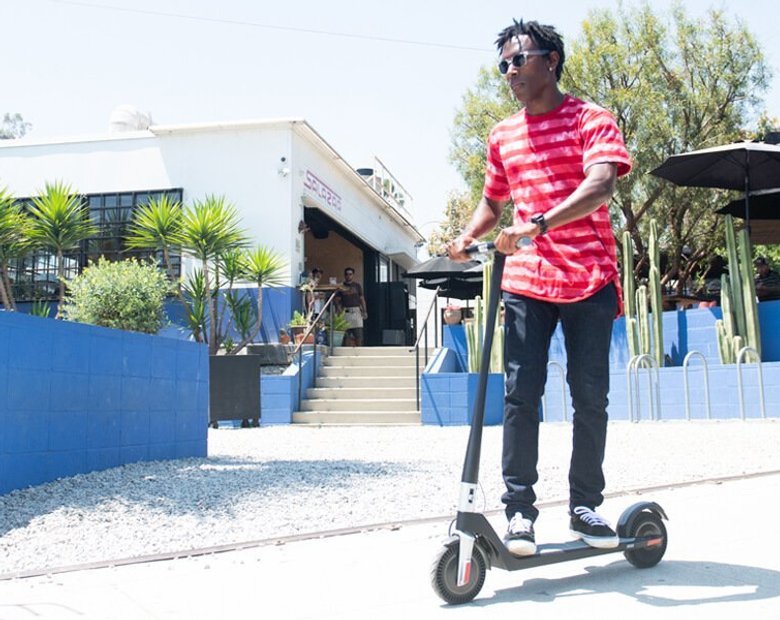
Want to get the most out of your electric scooter battery and extend your riding adventures? We've got you covered with our comprehensive guide full of maintenance tips and best practices.


*Disclaimer: Unagi, INC. has used best efforts, but does not in any manner guarantee the accuracy of the below findings regarding electric scooter laws in the United States or internationally. Electric scooter riders or those considering to purchase or begin…

It’s beyond question that we must drastically reduce carbon emissions in the coming years to head off the worst effects of climate change. How we do that has been a matter of considerably drawn-out debate. As individuals, it can be…

If you're considering riding an electric scooter for the daily urban commute - or even just for recreation - this article will give you the lowdown on getting insurance for an electric scooter.
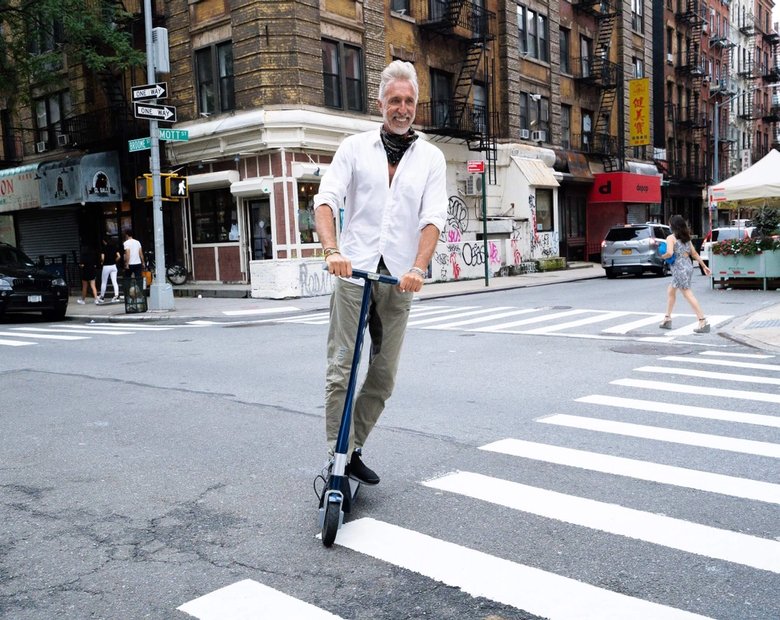
In many regions, there's a clear restriction against riding electric scooters on the road, with the rules steering their use towards designated areas such as bicycle lanes, multi-use paths, and shared street paths.

